Why Guadalajara?
The metropolitan area of Guadalajara is a conurbation that includes several municipalities (San Pedro Tlaquepaque, Tonalá, Zapopan, Tlajomulco de Zúñiga, El Salto, Juanacatlán, Ixtlahuacán de los Membrillos, Guadalajara) being the second most populated inthe country only surpassed by the metropolitan area of Mexico City.
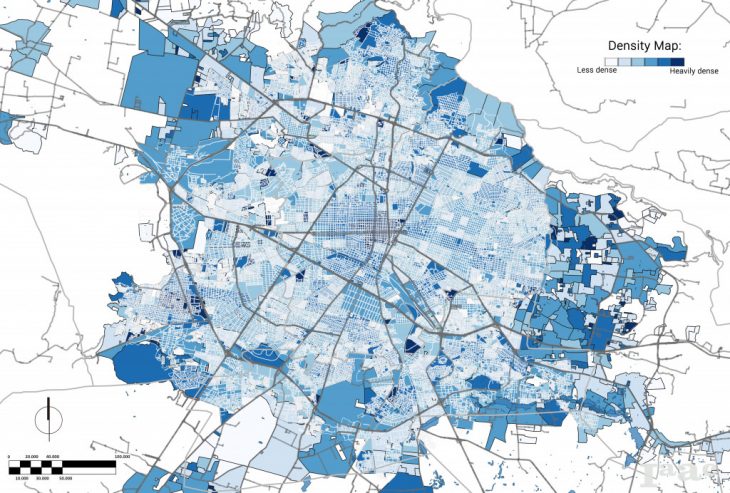
20-century growth in the metropolitan area of Guadalajara has been exponential, the city passed from 3 million in 1990 to 5 million inhabitants actually. This mass migration has resulted in inadequate planning which results in unfavorable conditions for all. This gave space for the creation of misery belts and dormitory cities.
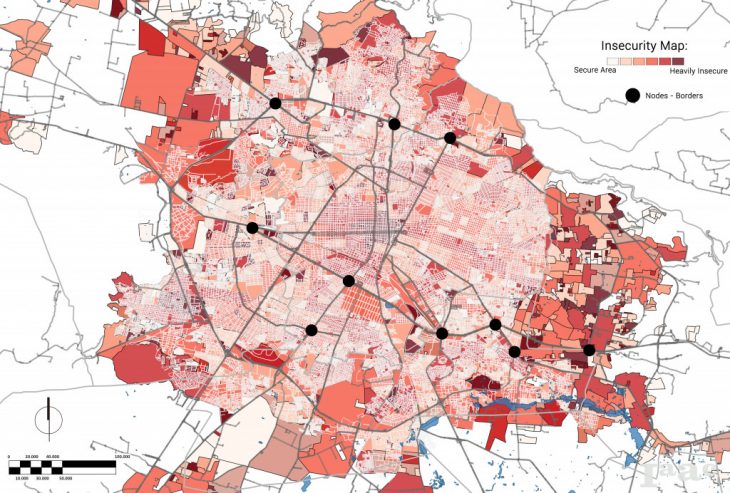
For that reason, we decided to analyze Guadalajara City, which has a lot of opportunities to improve. we see a relation between nodes and heavily insecure areas and how those borders cut connectivity between colonies, but not for cars.
Urban Borders:
In recent years the city of Guadalajara has invested in city transport infrastructure to lower traffic congestion and communicate, however, there are still needs for less-favored areas.
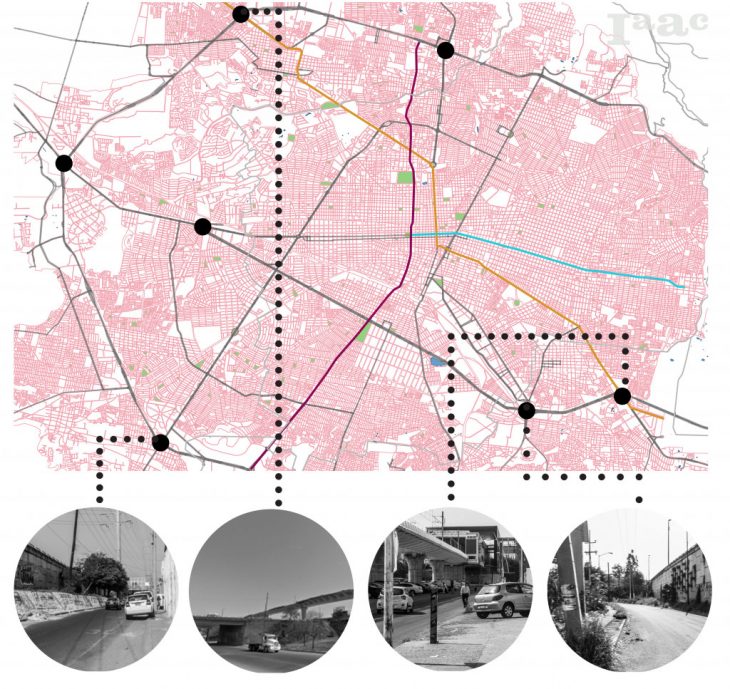
- This infrastructure ignores the present area’s needs.
- Gives priority to cars and less to pedestrians.
- Transportation infrastructure blocks and becomes a pedestrian’s urban barriers.
- Given the continuation of migration to the city, development has encroached on this transportation infrastructure. Creating massive walls between colonies.
- The infrastructure reduces parks, recreation, and green areas.
Ideogram Map:
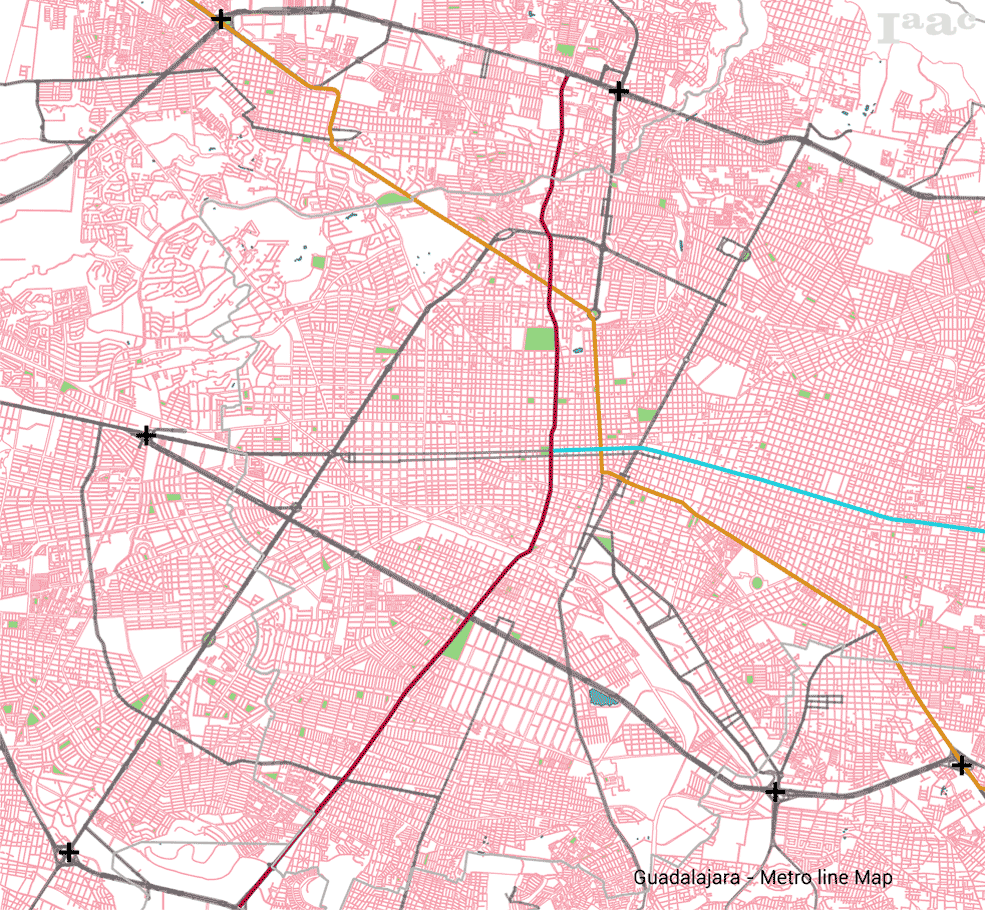
New urban filters:
To improve social cohesion and public connectivity, we have ideated strategies to transform these borders into filters to create social centers. To turn down the urban frontier, the public space has to appropriate it, Cyclo paths and pedestrians way have to increase near the invasive infrastructure.

“First life, then spaces, then buildings – the other way around never works.” -Jan Gehl- Cities are for people not for cars, human activities are a way to decrease insecurity and at the same time became more friendly and enjoyable for everyone.
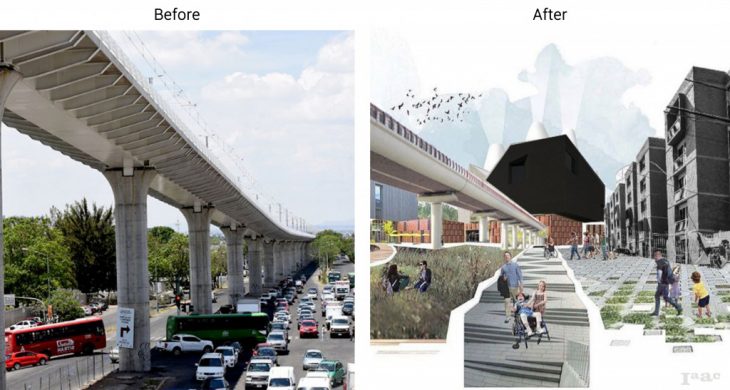
Node Transformation:
As an example of urban acupuncture, we transform one node to renew the city connectivity not only for cars as well for people, to create more human cities. Car circulation can be elevated to allow people to use down space and became public parks that generate colonies connections.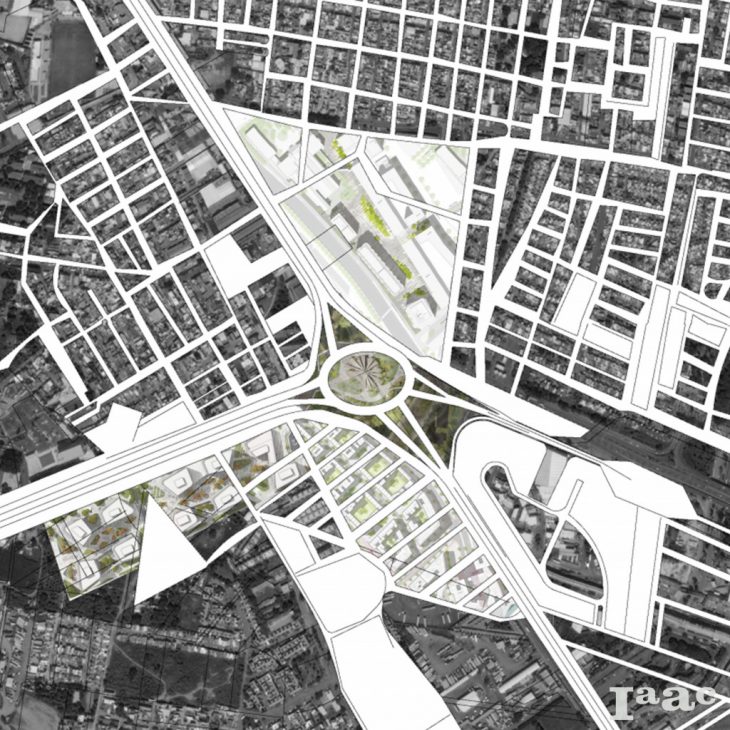 Transformation of infrastructure to get people to connect must be the priority of Guadalajara’s government, A replicability project can be applied in the nodes intersection. However, it is not necessary to tear down existing infrastructure, it will be a waste of resource, Nodes can be intervened in a way that public space, dialogue, and activities can increase.
Transformation of infrastructure to get people to connect must be the priority of Guadalajara’s government, A replicability project can be applied in the nodes intersection. However, it is not necessary to tear down existing infrastructure, it will be a waste of resource, Nodes can be intervened in a way that public space, dialogue, and activities can increase.

Credits:
From Bordes to Filters – Guadalajara City; Mexico, is a project of IAAC, Institute for Advanced Architecture of Catalonia developed at Master in City & Technology 2020/21 by Students: Juan Pablo Pintado, Miguel Angel Tinoco & Ivan Reyes, and Faculty: Manuel Gausa, Nicola Canessa & Giorgia Tucci.
